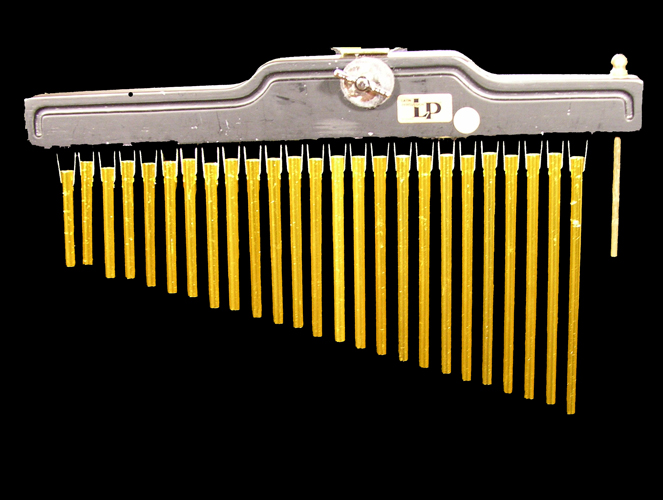Mark tree
[English]
CLASSIFICATION: Idiophone, Concussion Idiophone
HISTORY: Mark Stevens, a studio musician in Los Angeles invented the Mark Tree in 1967. The Mark Tree is also known as bar chimes. Although it is often referred to as wind chimes or bell tree, neither of these terms are correct. Today, the instrument is used in a wide variety of musical genres including popular, new age music and orchestral.
PHYSICAL DESCRIPTION: The Mark Tree is a series of 20 to 40 metal tubes (brass, aluminium, or glass) hung from a long wooden bar by thin nylon cords. The tubes are arranged from shortest to longest or highest pitch to lowest pitch in a single or in double rows. The instrument is played by brushing your hand (or a stick) across the bars either from higher to lower or lower to higher causing the free-hanging tubes to randomly strike the adjacent tubes and produce pitches from their vibrations. Occasionally, the instrument is outfitted with a damper bar that can reliably stop the sound quickly. Without the damper, it is very difficult to stop the tubes from hitting each other.
SOUND PROPERTIES: Since the sound is produced by the free-hanging tubes, the instrument produces a series of delicate high pitched bell-like sounds that can be described as a shimmering glissando. The effect can be quite etherial and magical.
RANGE: The Mark Tree is created in several models so you can sound more or less pitches for a wider range of sounds or versions with larger or smaller tubes for lower or higher pitches. The differences in models are personal preference to a larger degree, because any of the instruments can produce the basic shimmering effect. There are no specific pitches to be notated with the Mark Tree.
Example

See Also
[French] chapeau chinois (m)[German] Schellenbaum (m)
[Italian] albero di sonagli
Share
Tweet
Last Updated: 2013-03-06 00:01:31

